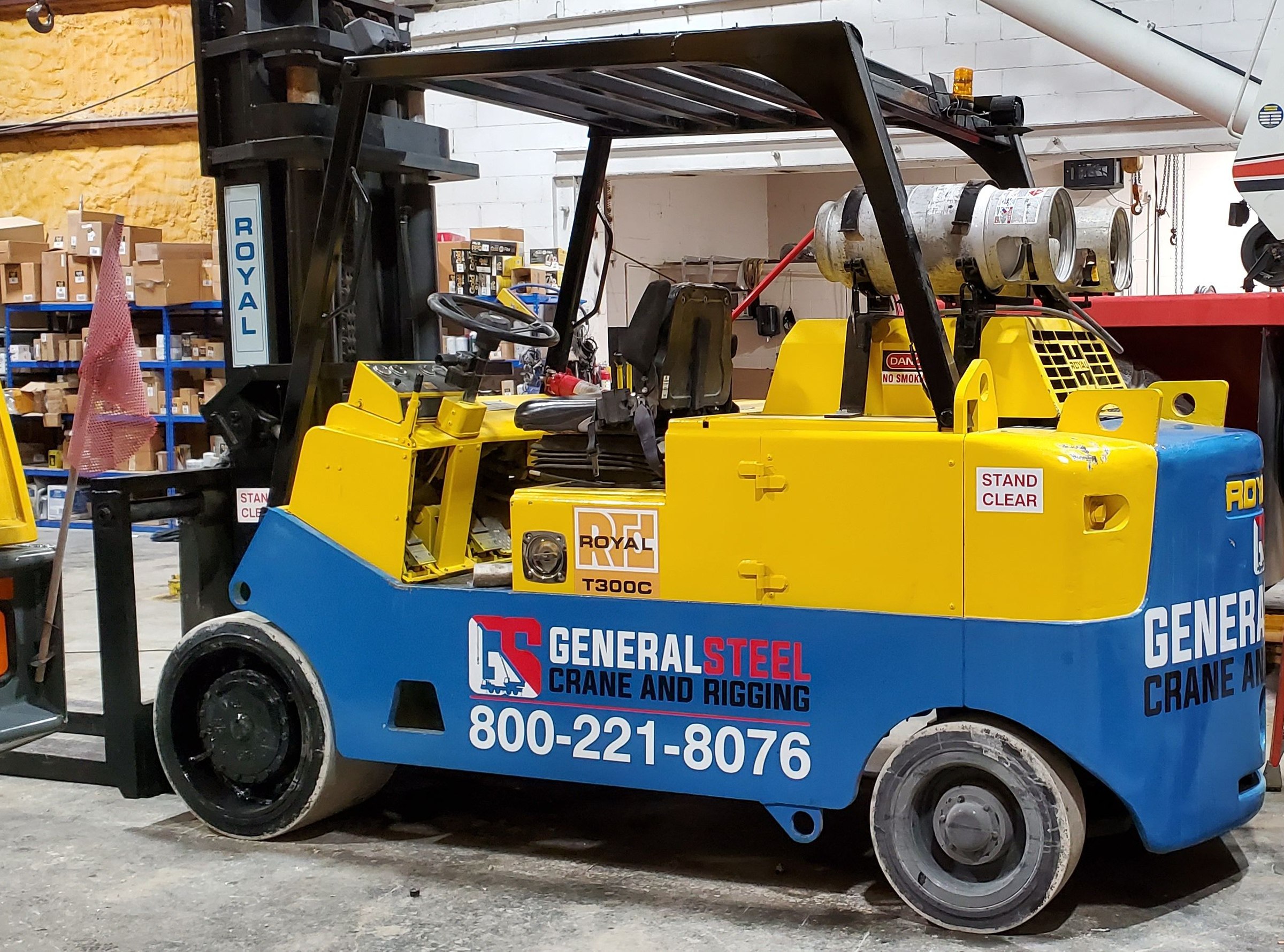Rough Terrain Crane Rental Service
Rough-terrain cranes are designed to assist in working on uneven ground and rough work sites where lifting is often both difficult and dangerous. Any risk that might be present is worse without the right equipment.
General Steel Crane and Rigging proudly offer comprehensive crane rental services throughout Kentucky and the surrounding areas. Our rough-terrain cranes have three steering modes to help you safely maneuver safely over uneven ground, up and down steep grades, loose terrain, and other obstacles. Keep reading to learn more about our rough terrain cranes and rental services.
Rough Terrain Crane Features
What defines a rough-terrain or off-road crane? Its lightweight yet highly stable body design makes a rough-terrain crane special. Most rough-terrain cranes have three essential features that make them more maneuverable and balanced than other crane designs.
- Wide Four-Wheel Undercarriage: A rough-terrain crane has a four-wheel undercarriage set wider than most cranes, featuring four-wheel drive and power steering for superior control over uneven and loose terrain below.
- Telescoping Boom and Outriggers: The lifting infrastructure of a rough-terrain crane features a telescoping boom and outriggers that provide better stability and support during lifts, so the crane cannot be put off-balance even on uneven terrain.
- Lightweight with a Small Cab and One Engine: Rough-terrain cranes are also remarkably lightweight. They accomplish this with a small cab and a single engine running the boom and undercarriage. This lighter, smaller design allows it to maneuver safely over loose terrain and handle tight spaces.
Rough Terrain vs. All Terrain Cranes: Which One is Best for Your Job?
All-terrain cranes are designed to provide greater versatility for both flat and rough terrain jobs. All-terrain cranes are larger and faster, able to take public roads at reasonable traveling speeds, and typically reach higher with longer booms. They are larger, heavier, and can be driven from site to site, while rough-terrain cranes are lighter and more maneuverable but must be transported.
All-terrain cranes, however, require a site to be prepared - mostly level and entirely stable for work safely, while all-terrain cranes can handle unfinished and even completely unprepared work sites like undeveloped land or a work site that has been disrupted but is not yet level.
When choosing whether you need a rough-terrain crane or an all-terrain crane, consider load weight, necessary boom height, terrain difficulty, and transportation cost. Rough terrain cranes are ideal for rugged, unfinished sites that require a lighter vehicle and maneuvering in tighter spaces.
Choose General Steel Crane & Rigging for Crane Rentals
General Steel Crane & Rigging can provide expert rough terrain crane rental for your project. We have offices in Henderson, KY; Bowling Green, KY; Elizabethtown, KY; and Hopkinsville, KY, but we serve clients in Tennessee, Kentucky, Southern Illinois, Southern Indiana, Missouri, and Ohio.
We back every crane rental with 24/7 on-site maintenance and make expert operators available based on your needs. Contact us today to consult on your project; we will perform an on-site assessment and help you build a comprehensive lifting plan to meet your needs. If a rough-terrain crane is right for the job, we'll have it on-site, spotlessly maintained, and on time for your first lifting day. If you also have more questions, make sure to read about us.
Locations
Rough Terrain Crane Rental FAQs
How much can a rough terrain crane lift?
A typical rough-terrain crane can lift between 30 to 160 tons depending on its size. Rough-terrain cranes typically lift more weight than other construction cranes but have a shorter lift height.
Do rough terrain cranes have 4-wheel drive?
Yes. In order to provide stability and maneuverability on uneven ground, rough-terrain cranes have all-wheel drive and three steering modes.
How do you determine if a rough terrain crane is the right equipment for the job?
Assess the conditions where a crane is needed. A heavier weighted load and uneven ground are the most apparent signs that you will need a rough-terrain crane. However, you should also consider accessibility to the site, whether rough terrain transport is possible or if only a rough-terrain crane could get to the lifting location. However, you can always ask your lifting rental partner for a consultation on the right crane for the job.





